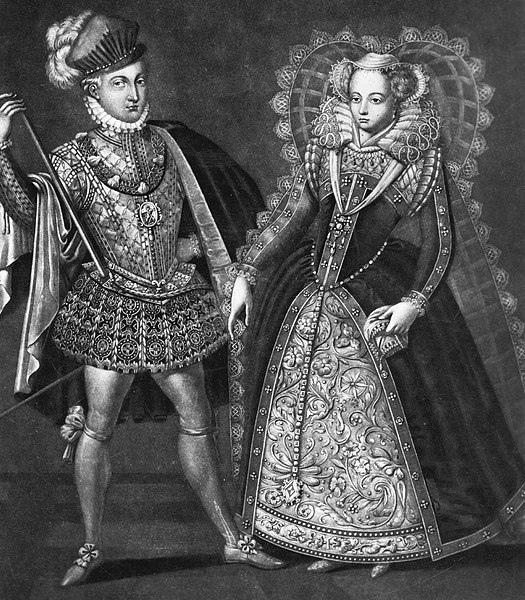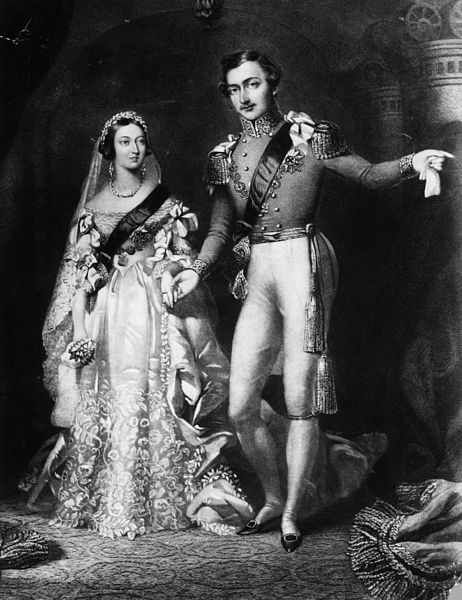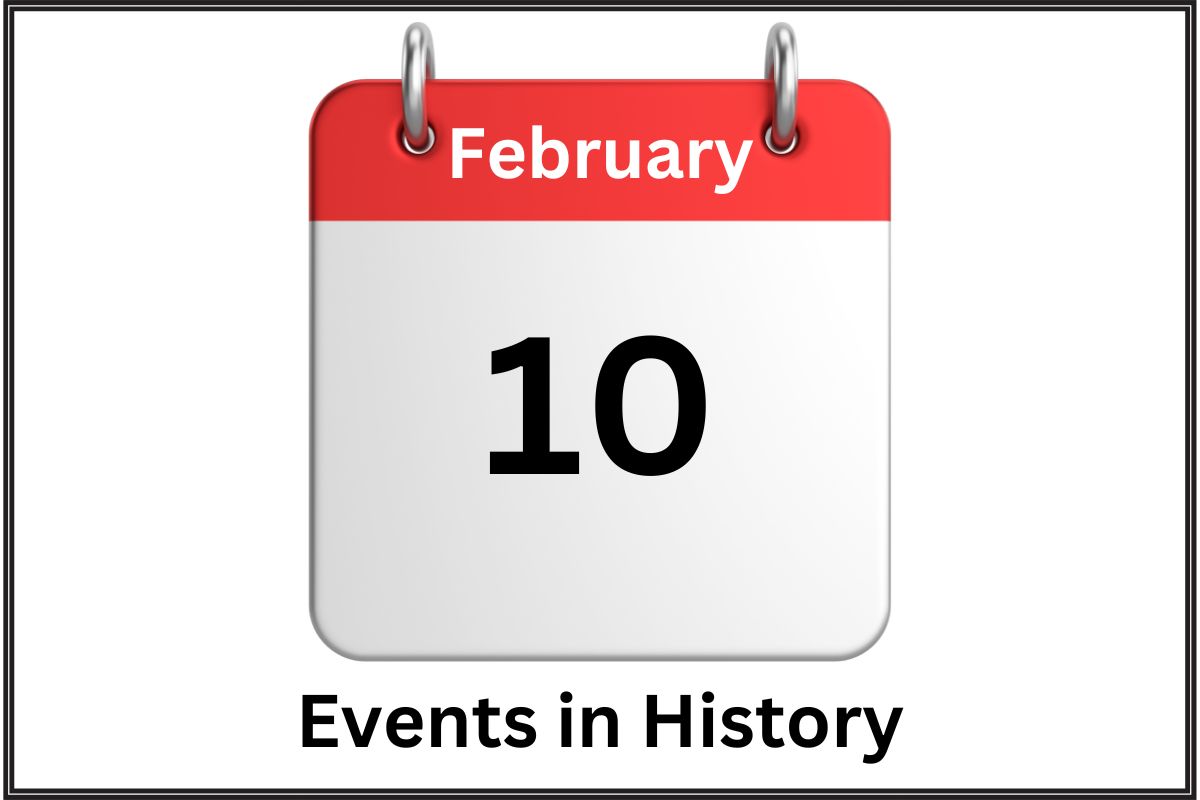February 10th marks a day rich in history, witnessing events that have shaped politics, culture, technology, and social norms across centuries.
From groundbreaking achievements and pivotal battles to significant cultural moments and advancements in technology, this date reflects the complexity and diversity of human endeavors.
Join us as we explore some of the most notable events that occurred on this day, unraveling their impact on the world then and now.
February 10th Events in History
1355 – The St. Scholastica Day riot breaks out in Oxford, England, resulting in the deaths of several students over two days
The St. Scholastica Day riot began on February 10, 1355, in Oxford, England. What started as a trivial disagreement between two students and a tavern keeper over the quality of wine escalated into a violent conflict that lasted for two days.
Also Read: February 9 – On this Day in History
The riot involved university students and townspeople, leading to the deaths of several individuals. The aftermath saw the imposition of severe penalties on the town by the university, establishing its dominance over the local population.
An annual penance was paid by the mayor of Oxford to the university until the early 19th century, underscoring the long-lasting impact of the conflict.

1567 – Lord Darnley, the second husband of Mary, Queen of Scots, is found dead under mysterious circumstances in Edinburgh, Scotland
Lord Darnley, Henry Stuart, was the second husband of Mary, Queen of Scots, and father to the future James VI of Scotland and I of England. His body was found on February 10, 1567, in the gardens of Kirk o’ Field house in Edinburgh, under mysterious circumstances following an explosion.
Also Read: February 11th Events in History
Darnley had been staying in the house, recovering from an illness. Although an explosion destroyed the residence, Darnley’s cause of death was purportedly suffocation, and no signs of blast injuries were found on his body.
His murder remains one of the most debated mysteries in Scottish history and led to widespread suspicion towards Mary and her close associate, James Hepburn, Earl of Bothwell.
1763 – The Treaty of Paris ends the French and Indian War/Seven Years’ War between Great Britain and France, as well as their respective allies, leading to significant territorial changes in North America
The Treaty of Paris, signed on February 10, 1763, ended the French and Indian War (the North American theater of the Seven Years’ War) between Britain and France.
It marked a significant turning point in world history, as it led to France ceding vast territories in North America to Britain, including Canada and all lands east of the Mississippi River, save for New Orleans.
Spain, allied with France, ceded Florida to Britain but received the Louisiana territory west of the Mississippi from France. This treaty reshaped the colonial map of North America and set the stage for future conflicts between Britain and its American colonies.
1798 – Louis-Alexandre Berthier removes Pope Pius VI from power
In the context of the French Revolutionary Wars, General Louis-Alexandre Berthier entered Rome on February 10, 1798, and proclaimed the Roman Republic. Pope Pius VI was taken prisoner in the process, marking a significant moment in the fraught relationship between the French revolutionary government and the Papacy.
This act was part of the wider French campaign against monarchies and religious institutions across Europe, aiming to spread the revolutionary ideals. The Pope was later deported to France, where he died in 1799, symbolizing the temporary decline of Papal temporal power in the face of revolutionary forces.
1814 – Napoleon Bonaparte’s French Empire achieves victory in the Battle of Champaubert during the War of the Sixth Coalition
The Battle of Champaubert occurred on February 10, 1814, during the War of the Sixth Coalition against Napoleon Bonaparte’s French Empire.
This battle was part of Napoleon’s “Six Days’ Campaign,” during which his forces aimed to push back the advancing Coalition armies that threatened France. The French achieved a decisive victory at Champaubert, where Marshal Michel Ney and General Emmanuel de Grouchy defeated the Russian forces under General Zakhar Dmitrievich Olsufiev.
This victory was significant for Napoleon, demonstrating his ability to still achieve military successes despite the overwhelming odds and the extensive coalition aligned against him. The campaign temporarily boosted French morale but ultimately could not prevent the Coalition’s advance towards Paris and Napoleon’s subsequent abdication in April 1814.

1840 – Queen Victoria of the United Kingdom marries Prince Albert of Saxe-Coburg and Gotha
On February 10, 1840, Queen Victoria of the United Kingdom married Prince Albert of Saxe-Coburg and Gotha. This marriage was not only a personal union of deep love and affection but also had significant political and social implications for Britain and Europe.
Victoria and Albert were first cousins, sharing a grandfather in Duke Francis of Saxe-Coburg-Saalfeld. Albert became an important advisor to Queen Victoria, influencing her in matters of state and public affairs.
Together, they had nine children, who married into royal and noble families across the continent, earning Victoria the nickname “the grandmother of Europe.” Their descendants played significant roles in the political landscape of Europe, linking many of its royal families.
1863 – The world’s first underground railway, the Metropolitan Railway of London, opens
The Metropolitan Railway, the world’s first underground railway, opened in London on February 10, 1863. It ran between Paddington (then called Bishop’s Road) and Farringdon Street, marking the beginning of the complex London Underground network known today as the Tube.
The introduction of the underground railway system revolutionized urban transportation, providing a much-needed solution to the overcrowding and pollution caused by horse-drawn carriages and the industrial boom.
The success of the Metropolitan Railway led to the expansion of underground rail networks in London and became a model for subway systems worldwide.
1870 – The YWCA (Young Women’s Christian Association) is founded in New York City
The Young Women’s Christian Association (YWCA) was founded in New York City on February 10, 1870. The organization was established to provide support, housing, and educational opportunities for young women moving to cities for work during the Industrial Revolution.
The YWCA aimed to develop the “whole woman” spiritually, mentally, and physically, setting a foundation for its long-term mission to empower women and eliminate racism.
Over time, the YWCA grew into a worldwide movement, offering services and advocacy on behalf of women’s rights, health, and equality across various sectors of society.
1906 – HMS Dreadnought, the first of a revolutionary new breed of battleships, is christened and launched by Britain
HMS Dreadnought, launched on February 10, 1906, marked a revolution in battleship design that rendered previous warships obsolete, leading to an arms race among the world’s navies, particularly between Britain and Germany.
Built by the Royal Navy, Dreadnought featured an “all-big-gun” armament scheme and steam turbine propulsion, which significantly increased speed and firepower. Its launch began the “dreadnought era,” prompting navies worldwide to build similar battleships.
The dreadnought became a symbol of national power and naval dominance, influencing naval architecture and military strategy leading up to World War I.

1933 – In Germany, the Nazi Party organizes a giant rally in Berlin to celebrate Adolf Hitler’s rise to power
On February 10, 1933, the Nazi Party organized a massive rally in Berlin to celebrate Adolf Hitler’s recent appointment as Chancellor of Germany.
This event was part of the Nazis’ efforts to consolidate power and rally public support for their regime. The rally showcased the party’s propaganda machine, with Hitler addressing the crowd, emphasizing themes of unity, strength, and the revival of Germany.
This period marked the beginning of the Nazis’ rapid establishment of a totalitarian state, with the suppression of opposition, the centralization of power, and the beginning of policies that would lead to World War II and the Holocaust.
1940 – Tom and Jerry make their debut in the animated cartoon “Puss Gets the Boot”
Tom and Jerry, the iconic cat and mouse duo created by William Hanna and Joseph Barbera, made their first appearance in the animated short “Puss Gets the Boot” on February 10, 1940. Initially named Jasper and Jinx, the characters underwent a name change after the first cartoon.
The series became known for its comedic violence and the clever, silent (or near-silent) ways in which Jerry the mouse would outwit Tom the cat.
The success of this first short led to MGM’s green-lighting more cartoons, and Tom and Jerry became one of the most beloved and enduring animated series in history, winning several Academy Awards for Animated Short Film over the years.
1942 – The first gold record is presented to Glenn Miller for “Chattanooga Choo Choo”
On February 10, 1942, the music industry issued its first gold record to Glenn Miller and his orchestra for the single “Chattanooga Choo Choo.” The certification was created by the record label RCA Victor to celebrate the sale of 1.2 million copies.
The presentation of a gold-plated master of the record marked a significant moment in the music industry, leading to the establishment of formal sales certification and awards for recording artists.
The idea of gold records became an aspirational achievement for artists, with later expansions including platinum and diamond certifications for even higher sales milestones.
1947 – Italy cedes most of Venezia Giulia to Yugoslavia
In the aftermath of World War II, on February 10, 1947, Italy signed the Treaty of Paris, which among other stipulations, required Italy to cede the majority of the Venezia Giulia region to Yugoslavia.
This decision came as part of the post-war reorganization of national boundaries and was meant to compensate Yugoslavia for territories it lost to Italy after World War I.
The city of Trieste was declared a free territory, creating a contentious zone between the West and the Eastern Bloc during the Cold War. The territorial changes led to significant demographic shifts and tensions in the region, including the exodus of many Italians from the area.
1954 – President Dwight D. Eisenhower warns against United States intervention in Vietnam
On February 10, 1954, President Dwight D. Eisenhower expressed caution against United States military intervention in Vietnam during a press conference. This statement came at a critical moment in the First Indochina War, as French forces were struggling against the Viet Minh.
Eisenhower highlighted the complexities of the situation and the risks involved in deploying U.S. troops, emphasizing the need for a multinational solution and support for the French effort rather than direct military involvement.
This stance foreshadowed the United States’ later involvement in Vietnam, which escalated significantly in the 1960s.
1962 – The Soviet Union exchanges captured American U2 spy plane pilot Gary Powers for captured Soviet spy Rudolf Abel
On February 10, 1962, a significant Cold War prisoner exchange took place at the Glienicke Bridge between East and West Berlin.
The Soviet Union released captured American U2 spy plane pilot Francis Gary Powers in exchange for Rudolf Abel, a Soviet spy caught in the United States. Powers had been shot down over the Soviet Union in 1960, and his capture was a diplomatic embarrassment for the U.S., exposing its aerial espionage activities.
The exchange was a rare instance of cooperation during the Cold War and was later dramatized in the 2015 film “Bridge of Spies.” This event highlighted the ongoing espionage and tension between the two superpowers.
1967 – The 25th Amendment to the United States Constitution is ratified, dealing with presidential succession and disability
The 25th Amendment, ratified on February 10, 1967, clarified issues related to presidential succession and procedures to follow in the case of presidential disability.
This amendment became particularly significant given the historical instances of presidential illnesses and the assassination of President John F. Kennedy in 1963, which highlighted the need for clear constitutional guidelines.
The amendment establishes the process for the Vice President to become acting President if the President is unable to perform their duties. It also outlines the procedures for filling a vacancy in the office of the Vice President and the steps for a President to declare themselves unable to discharge their duties, or for others to declare the President incapacitated.
1986 – The largest mafia trial in history, with 474 defendants, opens in Palermo, Italy
On February 10, 1986, the largest mafia trial in history opened in Palermo, Italy, indicting 474 defendants. This marked a significant crackdown on the Sicilian Mafia, also known as Cosa Nostra, by the Italian government.
The trial was held in a specially constructed bunker courtroom within the walls of Ucciardone prison to accommodate the large number of defendants and ensure the safety of the proceedings. The trial was a result of the work of judges Giovanni Falcone and Paolo Borsellino, who would both later be assassinated by the Mafia.
The event was a watershed moment in the fight against organized crime in Italy, leading to numerous convictions and significantly impacting the structure and operations of the Mafia.
1996 – The IBM supercomputer Deep Blue defeats world chess champion Garry Kasparov for the first time
On February 10, 1996, the IBM supercomputer Deep Blue made history by defeating world chess champion Garry Kasparov in one game of a six-game match.
Although Kasparov ultimately won the match 4-2, Deep Blue’s victory in the first game marked the first time a reigning world chess champion had been defeated by a computer under standard chess tournament conditions.
This event signaled a significant achievement in the field of artificial intelligence, demonstrating the potential of computers to challenge human intellect in complex tasks. The match was highly publicized, fueling discussions about the future of artificial intelligence and its potential applications.
2004 – The social networking site Facebook is founded by Mark Zuckerberg and his college roommates and fellow Harvard University students
Facebook, now known as Meta Platforms, was founded by Mark Zuckerberg and his college roommates and fellow Harvard University students on February 10, 2004. Initially created as a Harvard student directory featuring photos and personal information, Facebook rapidly expanded to other universities and eventually to the general public.
The platform’s growth transformed it into one of the world’s leading social media companies, profoundly influencing global communication, media, business, and politics.
Facebook’s impact on social interaction, information dissemination, and privacy has been a subject of extensive debate, highlighting its role in shaping the digital age.
2008 – The Northern Illinois University shooting occurs, with a gunman opening fire in a lecture hall before taking his own life, resulting in multiple fatalities and injuries
On February 10, 2008, a tragic event unfolded at Northern Illinois University (NIU) in DeKalb, Illinois, when a gunman opened fire in a lecture hall, leading to multiple fatalities and injuries. The shooter, a former graduate student of the university, entered a large lecture hall in the middle of a class and began shooting at students and faculty before taking his own life.
The incident sparked widespread shock and sorrow, reigniting debates over gun control, campus safety, and mental health issues in the United States. In response, NIU and other educational institutions across the country reviewed and enhanced their security measures and emergency response protocols.
